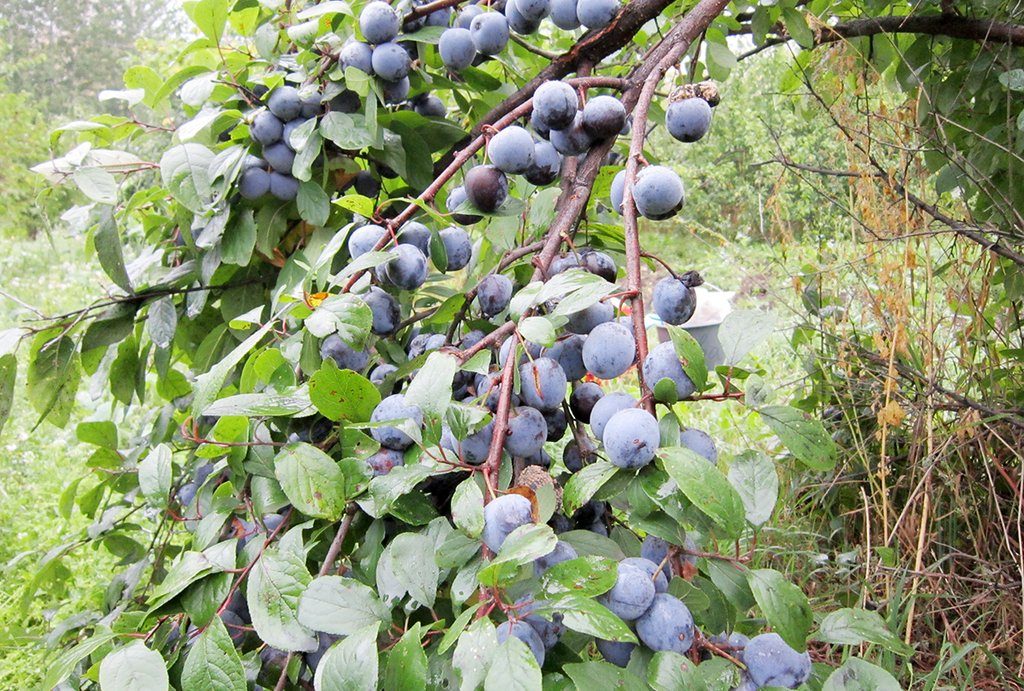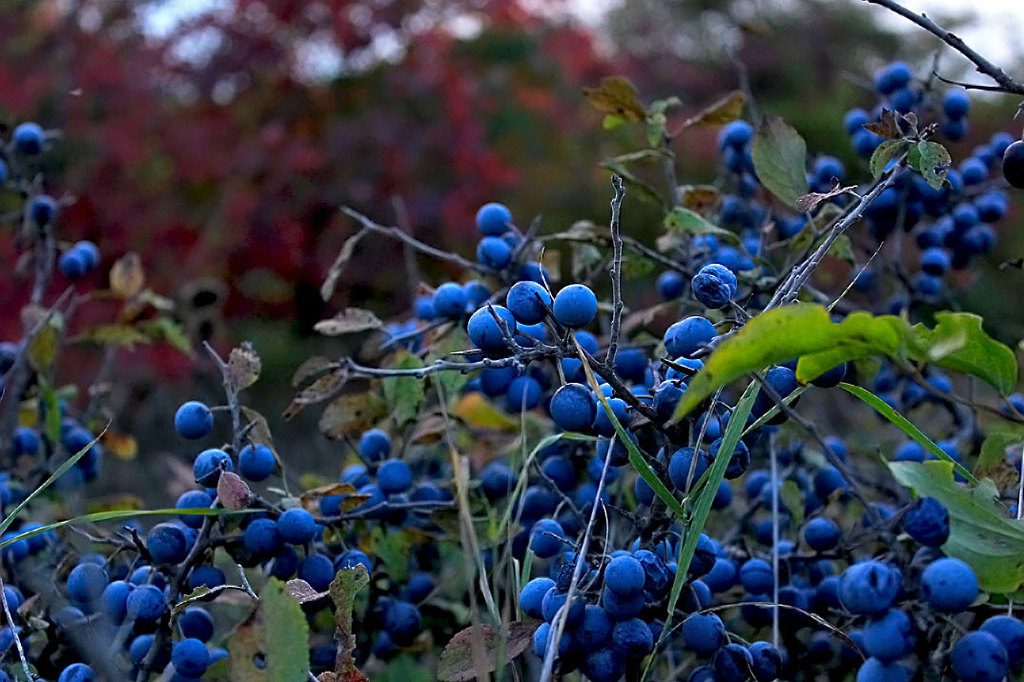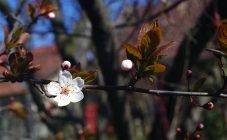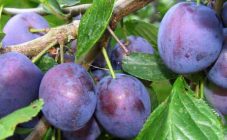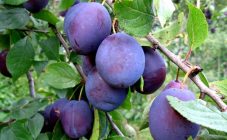Content:
The plant with the unusual name thorny is a hybrid of blackthorn and plum. Thanks to its endurance, the thorny plum has taken root well throughout the country and has earned the respect of gardeners with a positive effect on the human body, rich composition, and beneficial properties.
Asia is considered the homeland of tornosliv - there it was known in the territory of modern Syria as Damascus Plum. Already from the territory of Asia, the thorny plum came to England and gained popularity throughout Europe.
Characteristics of the Ternovka plum
Ternosplum is the result of crossing home plums and thorns. Not surprisingly, she inherited the basic qualities of her parents.
Description of thorny plum:
- A low tree or shrub with thorns, up to 5 m high, with a very developed root system;
- Abundant flowering, snow-white;
- Fruits are medium-sized, weighing 15 g, up to 4 cm in diameter, dark purple in color, sour-tart taste, oval in shape. There is a small bone inside.
Technical characteristics of ternos:
- The plant belongs to the genus plum, late ripening - blooms throughout June, sometimes even July, the berries ripen in September;
- One of the most cold-resistant crops, withstands frost up to 40 degrees;
- It grows and develops well even in unfavorable conditions: climatic disasters, an unsuccessful landing site, not the best soil;
- High resistance to diseases, does not lend itself to the influence of pests;
- Fruits are larger than those of thorns, not so tart, juicy;
- High productivity.
Ternosplum tolerates drought well, the frozen roots are restored, does not undermine and does not suffer from sunburn. The only thing that the plant does not tolerate well is salty swampy soils. It is not difficult to grow a tree, but it brings many benefits.
The main value of the thorny plum is berries rich in nutrients. The thorny plum contains:
- Vitamins (groups B, E, C);
- Minerals (copper, iron, cobalt, manganese, iodine, zinc, potassium, magnesium);
- Amino acids;
- Tanning components;
- Pectin;
- Monosaccharides;
- Coumarins.
Thanks to such a unique composition, Teroslum can bring many benefits to human health and well-being. Under the influence of coumarins, the robot of the cardiovascular system stabilizes, blood vessels expand, and the risk of blood clots decreases. Vitamin PP has a good effect on the work of the gastrointestinal tract, promotes the removal of toxins and toxins. Pectin prevents the accumulation of radioactive elements in the body.
With regular use of thorny plum, metabolism improves, immunity increases. Its low calorie and nutritional value makes it very productive with a variety of diets.
Despite the huge number of positive qualities, in some cases, the fruits of tornoslum can be harmful. This applies to people with high acidity of the stomach, allergies to this product, with exacerbation of peptic ulcer and chronic gastritis.
It cannot be argued that thorny plum is a favorite delicacy. Its fruits are rarely used fresh - they are quite tart and astringent in taste. But plum thorns are widely used in cooking: in the preparation of preparations for the winter, compotes, jam. Berries are frozen, dried, tea is brewed from the leaves.In European countries, thorny plum is used in many recipes for sauces and seasonings.
Varieties of thorny plums
The first varieties bred by breeding saw the light, thanks to the work of I. Michurin. These are the old varieties of thorny plums that can be found in old gardens: Tern sweet and dessert, Renkold.
In the process of spreading thorny plum, new hybrid varieties, a cross between plum and blackthorn, gradually developed. The quality of the fruits improved - they became larger, fleshy, and sweet.
Well-known in Russia is a varietal hybrid of blackthorn and plum No. 5 (Ulyanovskaya), No. 2 (Sadovaya), No. 6 (Kuibyshevskaya), No. 8 (Syzranskaya), Penza, Rannyaya.
There are decorative varieties of the blackthorn plum - they delight the eye with long flowering, beautiful pale pink flowers and unusual red leaves.
Today, two varietal varieties of thorny plums are becoming increasingly popular - the Bilasuvar plum and the Pride of Siberia:
- Ternoslum Pride of Siberia. According to the name, it has proven itself well in the harsh conditions of Siberia, and throughout Russia. A short tree with dark green pointed leaves and small thorns. It has inherited a slightly tart taste from the thorns. But at the same time, the berries are large, fleshy, rather sweet. Fruit size reaches 25 g, 5-6 cm in diameter, ovoid. In summer, plums are striking in their bright coral color; as they ripen, they become deep blue.
- Ternoslum Bilasuvar. Origin - Azerbaijan. Despite the warm homeland, it is well adapted to frost, temperature changes, and droughts. The form of the plant is a shrub, up to 3 m high. Ripens late in late September - early October. Fruits of thorny plums are large - up to 30 g, oval. When ripe, they acquire a dark blue matte color. The flesh of the thorny plum is green with red outlines. It stands out for its pleasant taste - a slight tinge of astringency, a well-balanced sweet-sour taste, and a refreshing aftertaste.
Features of agricultural technology
Planting and caring for the thorny varieties under consideration should not be difficult, even for not very experienced gardeners. The basic principles of growing are not much different from the rules for caring for a garden plum, only expressed in a simplified form:
- The choice of planting material. Growing a tree can be started with a seedling, a seed, or by grafting onto a regular plum. The simplest and most effective way of planting thorny plums is, of course, planting a finished seedling. When choosing a sprout, a biennial plant with a well-developed root system should be preferred.
- Choosing a landing site. Ternosplum is not at all demanding on the soil, only marshy and too salty soils are poorly tolerated. But if possible, it is better to choose a soil with low acidity or adjust it with lime. Another nuance - planting should be planned with the calculation of 4-5 m in diameter per tree.
- Planting thorny plums. Planting is recommended in the spring. A hole is dug, 50 cm deep and 70 cm in diameter. Drainage can be laid out on the bottom using crushed stone and sand. Mix the soil with manure and ash. The seedling is placed in the hole, the roots are carefully straightened and covered with prepared soil. After planting, the root collar should protrude 2-3 cm above the ground level. The tree is watered abundantly, mulching can be done.
- Fertilizing and caring for thorny. The young thorny plum tree grows at a fast pace and additional fertilization is not recommended. During this period, before the beginning of fruiting, it is enough to loosen the soil and, if necessary, water. Pruning should also be shallow, gradually forming a crown. As early as 3-4 years after planting, with the beginning of fruiting, organic fertilizers or mineral complexes can be applied in spring and autumn. At this time, more serious pruning should be carried out, removing young pagons and forming a crown from 4-5 main branches.
The plum is resistant to diseases and pests, but sometimes it can be affected by fruit rot, shark, dwarfism.In such cases, the tree is treated with special means.
How to tell a plum from a thorn
The main differences between thorny and thorns:
- Origin. Blackthorn is a wild plant, it has no varieties. Ternoslum - bred plant, by crossing thorns and plums;
- Plant shape. Blackthorn - a thorny bush, thorns - a small tree with a few thorns;
- Fruit shape. Blackthorn - small, blue. Ternovka is larger, with a more varied color: from red-violet to dark blue;
- Taste. Blackthorn - tart, sour, astringent. Teroslum - sweet and sour, less tart.
Ternoslum is not yet a very popular culture in our country. But, given the beneficial properties, ease of care and constant improvement of varieties, it is worth taking a closer look at this plant. It can open up an unusual piquant taste and new possibilities in cooking. This experience will not leave anyone indifferent.
